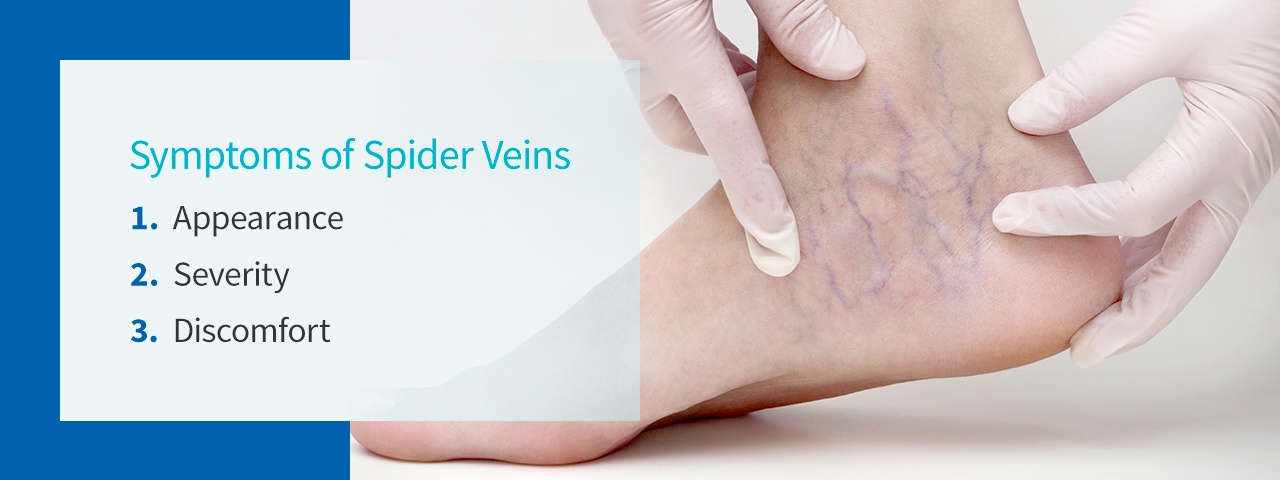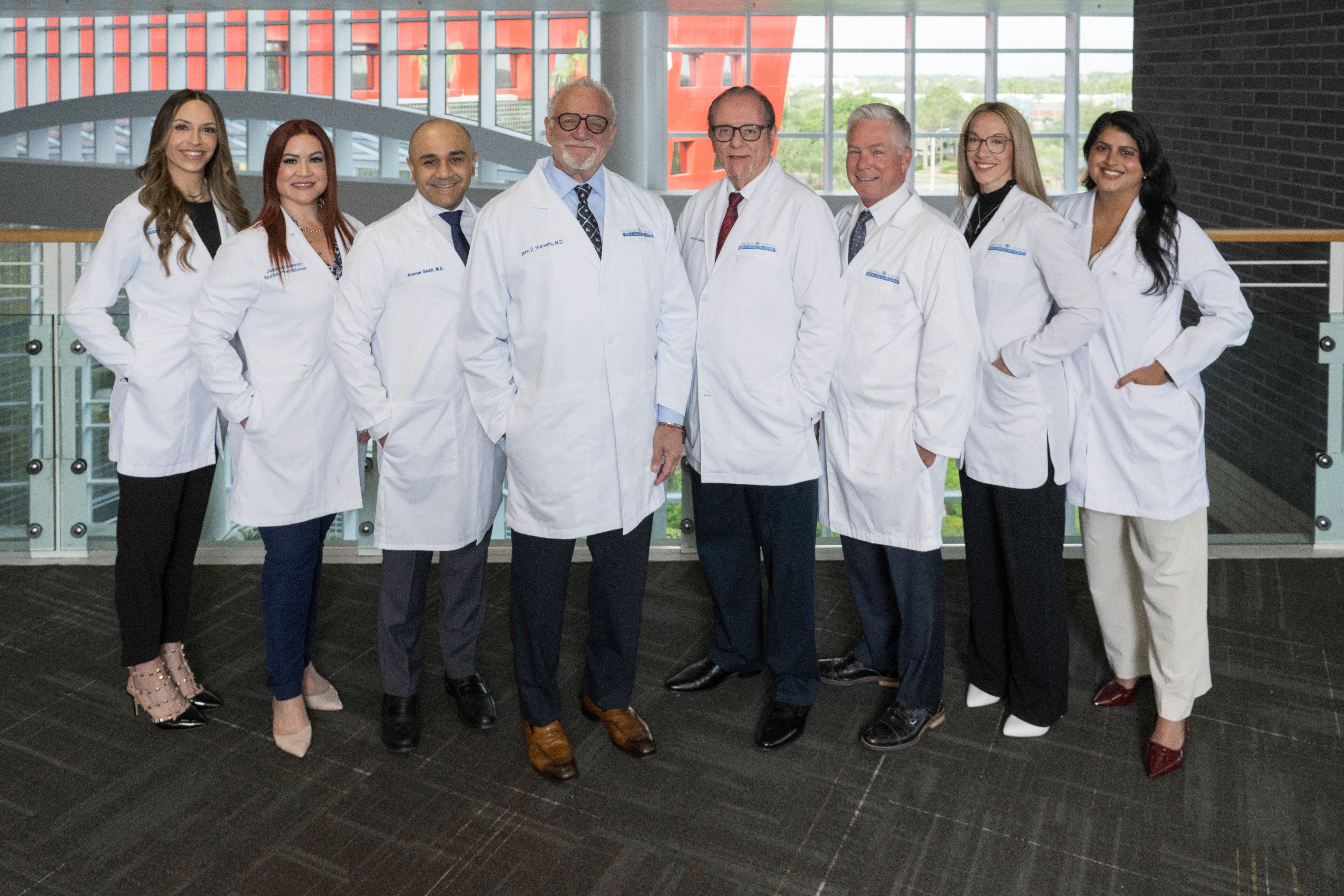
The terms “varicose veins” and “spider veins” are often used interchangeably to describe veins that are visible under the skin. But are they the same thing? These two vascular conditions actually have several key differences in appearance, cause, and treatment. Once you know these differences, they’re much easier to tell apart! The vascular physicians in Orlando at Central Florida Vein & Vascular Center offer minimally invasive treatment for both varicose and spider veins and would like to highlight how spider veins are different.
Spider veins are characterized by small, blue, web-like veins that can be seen in the skin or just under the surface of the skin. Unlike varicose veins, spider veins usually do not appear to be bulging above the skin surface. Many cases of spider veins are cosmetic and although still related to venous insufficiency, just not as severe. The exact causes for these cases are unknown, although it’s currently thought that genetics, pregnancy, trauma, aging, and sun damage can cause these branch-like veins to appear.
However, spider veins aren’t always cosmetic and require further treatment. Some individuals with spider veins may also notice that their legs feel heavy, painful, swollen, or restless. This may mean that the underlying cause of their spider veins is more significant venous insufficiency — a more serious condition that’s worth seeking treatment from a specialist. Venous insufficiency occurs when vein valves in the leg are unable to push blood upward against gravity. Blood pools in the vein as a result.
Over time, untreated venous insufficiency will progress, leading to larger and larger veins, increased symptoms of pain and swelling, and possibly leave you at a higher risk of developing blood clots or venous ulcers. It’s better to be proactive and ask a specialist about your spider veins to ensure that they aren’t caused by an underlying vein problem. If they are, don’t worry — treatment is easy, minimally invasive, and done in an outpatient setting. Many patients are able to get back to work the day after treatment.

Even though spider veins are often cosmetic, there are still treatments available to minimize the appearance of these veins. This may include spider vein sclerotherapy, where a sclerosing agent is injected into the affected vein which minimizes their appearance. Or, topical laser therapy can be used. This treatment utilizes micro-pulses of lasers to activate collagen, encouraging your skin to naturally heal itself and lessen the vein’s appearance. There are still more treatments available depending on the source of your spider veins.
All treatments we offer at Central Florida Vein & Vascular Center are minimally invasive with little downtime, so you can get back to your life without the appearance of spider veins or discomfort from venous insufficiency. If you have spider veins or any other concerns about your overall vein health, schedule a consultation with our team of the best vascular physicians in Orlando today by calling 407-545-3385 or 352-658-5547. We’ll assess the current state of your vein health and put together a treatment plan that will be most effective for your veins—whether it’s minimizing the appearance of your spider veins or handling underlying venous insufficiency.